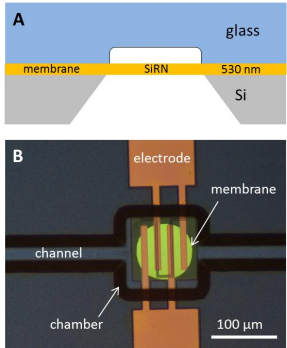The Powerful Promise of a Puzzling New Microscopic Combustion Engine
Engines have played a crucial part in the industrialization of the world. It’s hard to think of an innovation that has had more impact.

The trend today is toward smaller, more efficient engines. There are jet engines the size of coffee cups powering autonomous aircraft and powerful electric motors that make children’s helicopters more useful than anything that was possible just 10 years ago.
But there are good reasons to think that combustion engines are unlikely to get much smaller any time soon. Combustion engines become hugely inefficient as they get smaller because heat leaks away faster. That’s the inevitable result of the way that volume and surface area change relative to each other as things get smaller. (The same effect is the reason mice have a hard time staying warm while elephants have a hard time cooling down.)
So most microactuators rely on other effects to produce force. There are two main categories: thermal forces, which tend to be slow, and electrostatic forces, which tend to be weak. What’s needed is something that’s stronger and quicker.
Today, Vitaly Svetovoy at the University of Twente say they’ve discovered an entirely new mechanism for producing forces on the microscale that are both powerful and fast. And while they do not yet fully understand this mechanism, they believe it is based on the dissociation of water into hydrogen and oxygen gas and its recombination back into water.
These guys have even built a microengine demonstrating the phenomenon. “This actuator is the first step to truly microscopic combustion engines,” they say.
The new micro-combustion engine is simple in principle. It consists of a tiny chamber filled with water and containing a pair of electrodes attached to a circuit. Passing a current through the circuit causes the water to dissociate into oxygen and hydrogen, which then form nanobubbles.
Although these bubbles are too small to see, the volume of gas dramatically increases the pressure in the chamber, causing a membrane at one end to deform. This is what generates force.
When the current stops, the pressure drops rapidly. So quickly, in fact, that the researchers aren’t entirely sure why. It’s certainly too fast for conventional processes such as the gas diffusing out of the chamber or dissolving back into the liquid.
But Svetovoy and think they know what’s going on. Their idea is that when the current is switched off, the hydrogen and oxygen in the nanobubbles spontaneously combust, forming back into water. It is this combustion and the removal of the gas that causes the pressure to drop so rapidly.
Whatever the mechanism, they apply an alternating voltage/current at 50 KHz to create their engine. This produces a constant source of bubbles for combustion and causes a back-and-forth vibration of the membrane, which can be used to do work. Voila! A microscopic combustion engine.
That’s an exciting development that promises a myriad of possibilities. Svetovoy and co don’t describe any potential applications for their new micro combustion engines so I’ll leave that to the readers of MIT Technology Review. Ideas, please, in the comments section below.
Ref: http://arxiv.org/abs/1402.7101 : New Type of Microengine Using Internal Combustion of Hydrogen And Oxygen
Keep Reading
Most Popular
Large language models can do jaw-dropping things. But nobody knows exactly why.
And that's a problem. Figuring it out is one of the biggest scientific puzzles of our time and a crucial step towards controlling more powerful future models.
The problem with plug-in hybrids? Their drivers.
Plug-in hybrids are often sold as a transition to EVs, but new data from Europe shows we’re still underestimating the emissions they produce.
Google DeepMind’s new generative model makes Super Mario–like games from scratch
Genie learns how to control games by watching hours and hours of video. It could help train next-gen robots too.
How scientists traced a mysterious covid case back to six toilets
When wastewater surveillance turns into a hunt for a single infected individual, the ethics get tricky.
Stay connected
Get the latest updates from
MIT Technology Review
Discover special offers, top stories, upcoming events, and more.